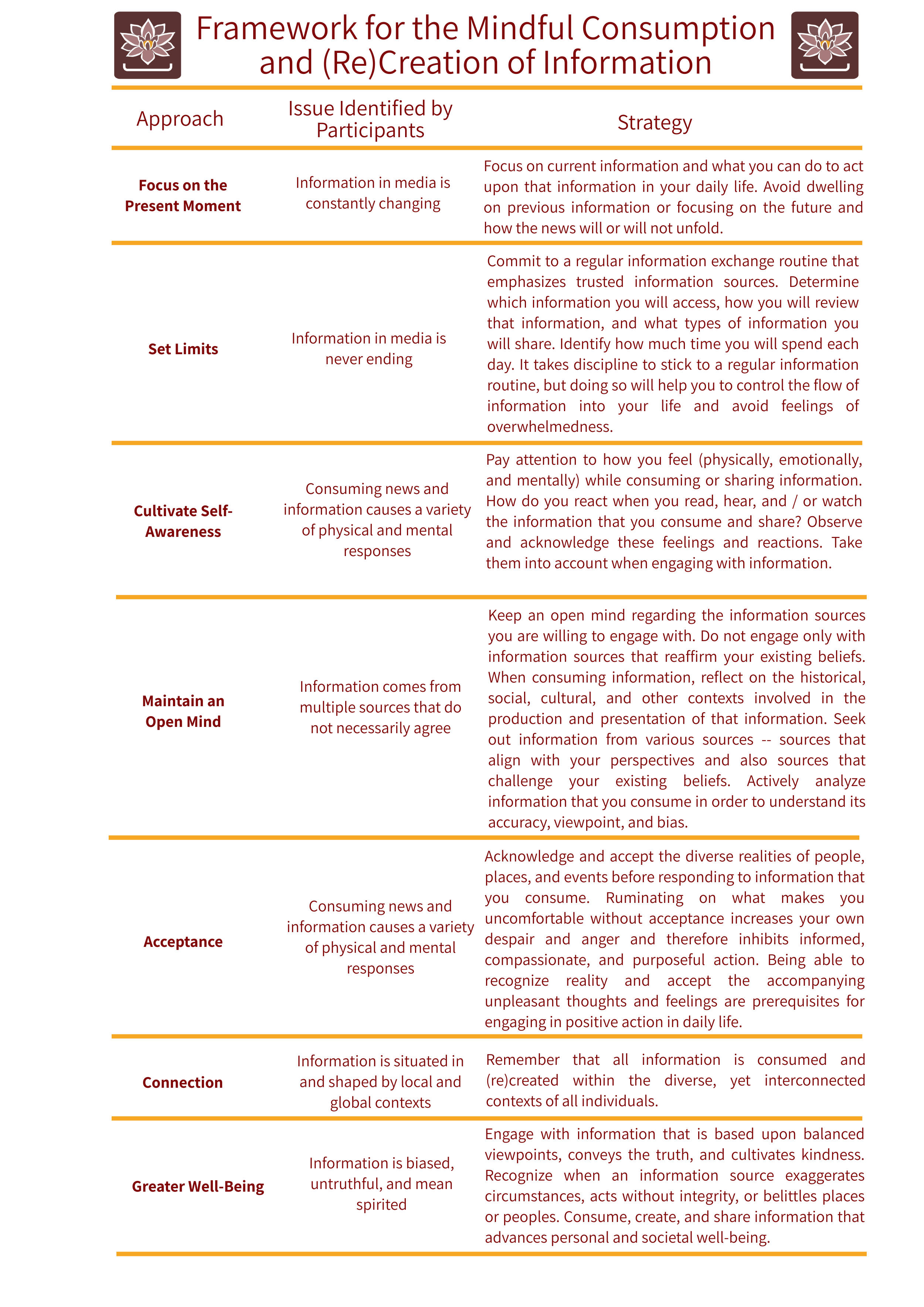Framework for the Mindful Consumption and (Re)Creation of Information
Understanding Information Exchange in Montana During the Digital Era is a research project inspired by the corpus of Ivan Doig and builds upon the research of Dr. Justin D. Shanks focused on information and society, as well as the technology of mindfulness and mindfulness of technology.
The Framework for the Mindful Consumption and (Re)Creation of Information seeks to present a mindful approach for anyone to use when accessing, analyzing, and sharing information. In this sense, mindfulness is meant to be an inclusive practice for individuals to apply increased awareness and purposeful action to what, when, how, and why information is consumed and (re)created through information exchange. Acknowledging the rich historical background, cultural traditions, and religious practices that are embedded within mindfulness, this project makes a purposeful decision not to align itself with one tradition over another or to prescribe specific practices instead of others. This decision was made in order to present mindfulness in an inclusive and approachable manner. In doing so, this project explores possibilities for uniting mindfulness and information exchange and also provides a framework for purposeful and engaged thinking about processes of information exchange in our contemporary digital era.

This project is particularly attentive to News: A Consumer’s Guide, co-authored by Ivan and Carol Doig. The book provides a guide for how to best read and listen to the news. Intended for the average citizen, the Doigs’ text also presents tips for examining accuracy, viewpoint, and bias. Although published in 1972, this text is surprisingly relevant to and useful for understanding our contemporary fast paced information environment that presents a vast quantity of information from multiple sources.
The Framework for the Mindful Consumption and (Re)Creation of Information includes approaches that can aid individuals, communities, and institutions in making more mindful decisions regarding the consumption, analysis, and (re)creation of information in the digital era. The approaches and strategies can be used individually and in any sequence. However, for maximization of benefit, it is suggested that approaches and strategies be used collectively. However, just as with any other skill, the mindful consumption and (re)creation of information requires practice. Through the collection of qualitative and quantitative data collection from 1,147 participants, this project makes an intentional effort to reflect the experiences, views, values, and aspirations of everyday Montanans who consume and (re)create news and other forms of information. The researcher’s perspective is rooted in the dominant discourse of academic research and scientific literature about historical and social aspects of information. As such, this perspective does not necessarily reflect the lived experiences of everyday Montanans. Therefore, in combining academic research and scientific literature with the lived experiences of everyday Montanans, this project articulates the following approaches and strategies to address issues related to information exchange identified by survey respondents and interview participants across the research.

